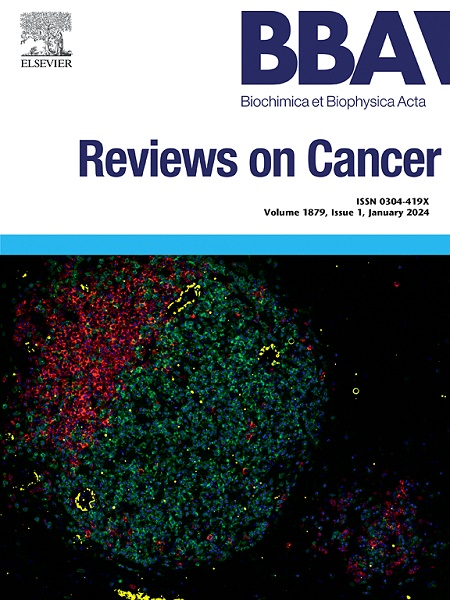Spatial heterogeneity in glioblastoma: Decoding the role of perfusion
IF 9.7
1区 医学
Q1 BIOCHEMISTRY & MOLECULAR BIOLOGY
Biochimica et biophysica acta. Reviews on cancer
Pub Date : 2025-07-03
DOI:10.1016/j.bbcan.2025.189383
引用次数: 0
Abstract
Glioblastoma multiforme (GBM) is a highly aggressive brain cancer marked by aggressive growth and therapeutic resistance. A growing body of research highlights substantial spatial heterogeneity within GBM tumors as a critical factor contributing to treatment failure. Advanced molecular techniques, including third-generation genomics, high-resolution metabolomics, and single-cell and spatial transcriptomics, have illuminated the detailed genetic and epigenetic landscape, revealing a complex interplay of molecular modifications. A key determinant of spatial heterogeneity is differential perfusion, which leads to the formation of distinct microenvironmental niches characterized by varying oxygen, nutrient, and growth factor availability. This ITH impacts not only GBM cancer cells but also the entire tumor microenvironment, including immune and other stromal cells. Interactions between cancer cells and the surrounding stroma significantly modulate immune surveillance, frequently promoting tumor malignancy. Perfusion further dictates the plasticity in GBM, enabling their transformation into the aggressive mesenchymal subtype. This review examines how such perfusion-driven differences affect GBM intra-tumoral heterogeneity, focussing on the aspects of immune regulation, and treatment resistance. We discuss emerging therapeutic strategies that target perfusion-induced heterogeneity, including anti-angiogenic and immunotherapeutic approaches. Further, the review emphasizes the importance of the tumor microenvironment and highlights the complex interplay of factors driving GBM progression, paving the way for more effective and personalized treatment strategies aimed at enhancing patient survival.

胶质母细胞瘤的空间异质性:解读灌注的作用。
多形性胶质母细胞瘤(GBM)是一种高度侵袭性的脑癌,其特征是侵袭性生长和治疗抵抗。越来越多的研究表明,GBM肿瘤内部的空间异质性是导致治疗失败的关键因素。先进的分子技术,包括第三代基因组学、高分辨率代谢组学、单细胞和空间转录组学,已经阐明了详细的遗传和表观遗传景观,揭示了分子修饰的复杂相互作用。空间异质性的一个关键决定因素是不同的灌注,这导致形成不同的微环境生态位,其特征是不同的氧、养分和生长因子的可用性。这种ITH不仅影响GBM癌细胞,还影响整个肿瘤微环境,包括免疫细胞和其他基质细胞。癌细胞和周围基质之间的相互作用显著调节免疫监视,经常促进肿瘤恶性。灌注进一步决定了GBM的可塑性,使其转化为侵袭性间充质亚型。这篇综述探讨了这种灌注驱动的差异如何影响GBM肿瘤内异质性,重点关注免疫调节和治疗抵抗方面。我们讨论了针对灌注诱导异质性的新兴治疗策略,包括抗血管生成和免疫治疗方法。此外,该综述强调了肿瘤微环境的重要性,并强调了驱动GBM进展的因素的复杂相互作用,为更有效和个性化的治疗策略铺平了道路,旨在提高患者的生存率。
本文章由计算机程序翻译,如有差异,请以英文原文为准。
求助全文
约1分钟内获得全文
求助全文
来源期刊

Biochimica et biophysica acta. Reviews on cancer
医学-生化与分子生物学
CiteScore
17.20
自引率
0.00%
发文量
138
审稿时长
33 days
期刊介绍:
Biochimica et Biophysica Acta (BBA) - Reviews on Cancer encompasses the entirety of cancer biology and biochemistry, emphasizing oncogenes and tumor suppressor genes, growth-related cell cycle control signaling, carcinogenesis mechanisms, cell transformation, immunologic control mechanisms, genetics of human (mammalian) cancer, control of cell proliferation, genetic and molecular control of organismic development, rational anti-tumor drug design. It publishes mini-reviews and full reviews.
 求助内容:
求助内容: 应助结果提醒方式:
应助结果提醒方式:


